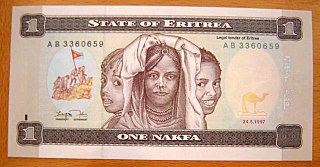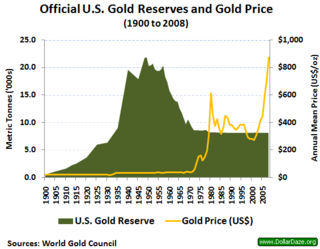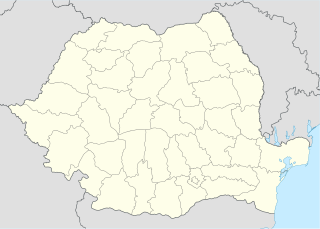Related Research Articles

The economy of Eritrea has experienced considerable growth in recent years, indicated by an improvement in gross domestic product (GDP) in October 2012 of 7.5 percent over 2011. However, worker remittances from abroad are estimated to account for 32 percent of gross domestic product. Eritrea has an extensive amount of resources such as copper, gold, granite, marble, and potash. The Eritrean economy has undergone extreme changes due to the War of Independence.

Potash includes various mined and manufactured salts that contain potassium in water-soluble form. The name derives from pot ash, which refers to plant ashes or wood ash soaked in water in a pot, which was the primary means of manufacturing the product before the Industrial Era. The word "potassium" is derived from "potash".

A gold reserve is the gold held by a national central bank, intended mainly as a guarantee to redeem promises to pay depositors, note holders, or trading peers, during the eras of the gold standard, and also as a store of value, or to support the value of the national currency.
Odo Shakiso is one of the Aanaas in the Oromia of Ethiopia. Part of the Guji Zone, Odo Shakiso is bordered on the south by the Dawa River which separates it from Arero, on the west by Bule Hora, on the northeast by Uraga, on the north by Bore, on the northeast by Adolana Wadera, and on the east by Liben. Towns in Odo Shakiso include Shakiso and Megado.
The Ogaden Basin is an area of Huwan that may hold significant reserves of crude oil and natural gas. The basin covers an area of some 350,000 square kilometres and is formed from sedimentary rocks up to 10,000 meters thick. It has geological similarities to other hydrocarbon-rich basins in the Middle East.

Shakiso is a town in southern Ethiopia. Located in the Guji Zone of the Oromia Region, this town has a latitude and longitude of 5°45′N38°55′E and an elevation of 1758 meters above sea level.

Adola is a town located in the Guji Zone of the Oromia Region, at an altitude of 1,758 metres (5,768 ft) above sea level. 470 km from Addis Ababa, also Known Finfinne, capital of oromia state.
Burundi is a producer of columbium (niobium) and tantalum ore, tin ore, and tungsten ore, and some deposits of gold which are designated for export. Burundi has resources of copper, cobalt, nickel, feldspar, phosphate rock, quartzite, and rare reserves of uranium, and vanadium. The country is also a producer of limestone, peat, sand and gravel for domestic consumption and as building materials. As of 2005, manufacturing accounted for 8% of the country's gross domestic product.

Mining is important to the economy of Ethiopia as a diversification from agriculture. Currently, mining comprises only 1% of GDP. Gold, gemstones, and industrial minerals are important commodities for the country's export-oriented growth strategy. Tantalum mining has also been profitable. It was reported that in the late 1980s, the mineral industry lacked importance given that it contributed less than 0.2 percent of Ethiopia's GDP. Mining for gold is a key development sector in the country. Gold export, which was just US$5 million in 2001, has recorded a large increase to US$602 million in 2012.
The mineral industry of Russia is one of the world's leading mineral industries and accounts for a large percentage of the Commonwealth of Independent States' production of a range of mineral products, including metals, industrial minerals, and mineral fuels. In 2005, Russia ranked among the leading world producers or was a significant producer of a vast range of mineral commodities, including aluminum, arsenic, cement, copper, magnesium compounds and metals, nitrogen, palladium, silicon, nickel and vanadium.

The Certej mine is an epithermal gold-silver deposit located in the Apuseni Mountains of Transylvania in western Romania. The deposit extends from surface and was previously mined as an open pit. Certej contains proven and probable reserves of approximately 2.5 million ounces of gold and 16.3 million ounces of silver.
The Cavnic mine is a large mine located in the northwest of Romania in Maramureș County, 26 km southwest of Baia Mare and 576 km north of the capital, Bucharest. Cavnic represents one of the largest polymetallic reserves in Romania having significant reserves of gold, silver, copper, lead and zinc amounting to 20 million tonnes of ore grading 1g/t gold, 30g/t silver, 2% lead, 3% zinc and 1% copper. The resources amount to 640,000 oz of gold, 19.2 million oz of silver, 400,000 tonnes of lead metal, 600,000 tonnes of zinc metal and 200,000 tonnes of copper metal.

The Donald and Sylvia McLaughlin Natural Reserve is a 7,050-acre (28.5 km2) University of California Natural Reserve System reserve in the Blue Ridge Berryessa Natural Area, in Napa and Lake counties of California. The site is owned by the Homestake Mining Company, and is the site of the now-closed McLaughlin Mine.
Mining is an important industry in Pakistan. Pakistan has deposits of several minerals including coal, copper, gold, chromite, mineral salt, bauxite and several other minerals. There are also a variety of precious and semi-precious minerals that are also mined. These include peridot, aquamarine, topaz, ruby, emerald, rare-earth minerals bastnaesite and xenotime, sphene, tourmaline, and many varieties and types of quartz .
The Muncelu Mic mine was a large open pit mine in the western of Romania in Hunedoara County, 16 km southeast of Simeria and 387 km north-west of the capital, Bucharest. Muncelu Mic represents one of the largest iron ore reserves in Romania having estimated reserves of 6.5 million tonnes of ore. When it was operational it produced around 200,000 tonnes of iron ore/year. The mine also has a gold and silver reserves of around 5.4 million tonnes grading 1g/t gold and 8g/t silver resulting 173,000 oz of gold and 1.38 million oz of silver.

The Colnic mine is a large open pit mine in the west of Romania in Hunedoara County, 30 km north of Deva and 400 km north of the capital, Bucharest. Colnic represents a large gold and copper deposit with estimated reserves of 2.15 million oz of gold and 135,000 tonnes of copper. The project is owned by the Toronto-based company Carpathian Gold.
The Moldova Nouă mine is a large mine in the west of Romania in Caraş-Severin County, 93 km southwest of Reşiţa and 579 km north-west of the capital, Bucharest. Moldova Nouă represents the second largest copper reserve in Romania having estimated reserves of 500 million tonnes of ore grading 0.35% copper.

The Săcărâmb mine is a large open pit mine in the west of Romania in Hunedoara County, 30 km north of Deva and 400 km north of the capital, Bucharest. Săcărâmb represents a large gold deposit with estimated reserves of 0.53 million oz of gold. The mine also has the only tellurium and selenium reserves in Romania having around 10 million tonnes grading 0.24g/tonnes for both elements. The project is owned by the Toronto-based company Carpathian Gold in association with the Romanian company Deva Gold.

The Țarina mine is a large mine located in the west of Romania in Alba County. Țarina represents a large gold deposit with estimated reserves of 1.52 million oz of gold and 5.59 million oz of silver.

The mining industry of Sudan was mostly driven by extraction fuel minerals, with petroleum accounting for a substantial contribution to the country's economy, until the autonomous region of Southern Sudan became an independent country in July 2011. Gold, iron ore, and base metals are mined in the Hassai Gold Mine. Chromite is another important mineral extracted from the Ingessana Hills. Other minerals extracted are gypsum, salt, and cement. Phosphate is found in Mount Kuoun and Mount Lauro in eastern Nuba. Reserves of zinc, lead, aluminium, cobalt, nickel in the form of block sulfides, and uranium are also established. Large reserves of iron ore have been established.
References
- 1 2 3 "US$5 billions worth gold reserves discovery in Ethiopia". mining.com. 2012. Retrieved 2013-07-16.